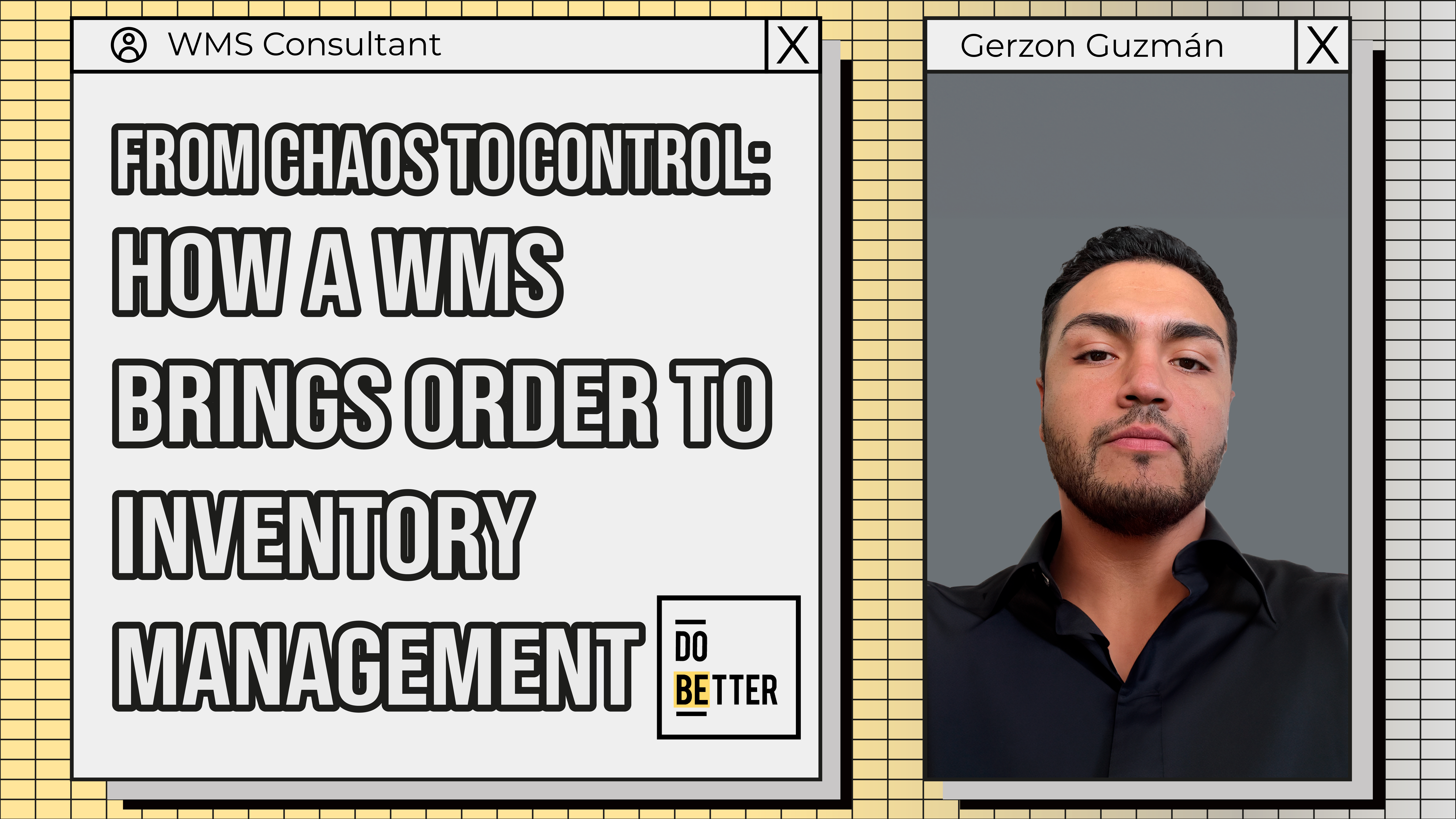Inventory reliability is vital for organizations, supply planning and sales depend on it. In your experience, when is it necessary to take the step to acquire a WMS? Which aspects are critical and should not be missed because they may impact the profitability of the organization?
Gerzon G: The need for a WMS arises from important pains within the organization in service level criteria, or inventory management and the correct management of it.
Undoubtedly it is the correct monitoring of stock management, since this indicator affects other processes such as: planning when buying excessively or buying below what is necessary, stock adjustments (impact on accounting level), service level.
What are the main KPI's? What is expected to improve with the WMS at this level?
Gerzon G: Mainly inventory tracking and assertiveness. Additionally, we see positively affected the generation or improvement of productivity indicators.
If there are ERP's within the organization, how would the interfacing process work with a WMS?
Gerzon G: The interfaces are very important at the time of integration with the WMS, since the necessary data must be mapped correctly
for proper operation and management. This is essential to avoid subsequent manual reprocessing in both the ERP and the WMS.
There are many variables that interfere in the execution of processes, staffing, systems, documentation, stakeholders and more.
How do you achieve a correct understanding of processes? What happens when there are differences between execution and documented processes? How common is it?
Gerzon G: The main thing is to have interaction with those involved in each process, which can be complex at the beginning of the project due to the remote mode that can be taken.
Undoubtedly what determines this point is the technical visit to the facilities and witnessing the process as such.
Differences between what is narrated by the speaker and by the operators usually occur at least in the details of the process,
which are of utmost importance in order to understand 100% of the need and what we need to cover with the tool.
To avoid this discrepancy between the operability and the theory handled by the supervisor or process manager,
it is necessary the participation of all the members of the process in order to have a general vision of the process and not an obtuse one from a particular point of view.
Talking about the implementation as such, what is the first thing to be done? Are there methodologies or standards?
Gerzon G: For both options the answer is yes, there is an Agile methodology by Infor in the implementation that seeks
that the customer adheres 60% to the standard of the tool, thus having 30% of minor modifications and leaving us a margin of 10% for
particularities coming from the customer that depend on some extension or development by the team.
The adaptive capacity of the WMS and its efficiency relative to implementation times and costs are closely related.
How are implementation times optimized? What is the adaptive capacity of the WMS?
Gerzon G: The implementation times are defined contractually in the project design, and the activities and periodicity of the activities are also reviewed here.
As an important point, both the success and the speed of the implementation depend on the ingrained knowledge that the Key Users can acquire,
since they are the transfer of the information for the operation, who are the end user of the system.
The system itself is in constant feedback with the feedback provided by customers. This has been an advantage for the tool to address many needs in a standard way according to the particularity of each client,
in the same way there is the possibility of making developments, or extensions if necessary.
Other key points in warehouse management are cyclical inventory taking, procurement and purchase dispatch. Does the hardware used by customers have an impact on the WMS? Is there any equipment that is not compatible?
Gerzon G: Without a doubt, it is necessary to have the right equipment for the correct operation of the system,
for example: Wi-Fi lighting, RF handhelds, etc.
Beyond not being compatible with the WMS, is that they have obsolete software that would not support the system itself.
How do you manage the testing, training and actual implementation of the WMS with the customer? Are there delimited stages for this?
Gerzon G: Indeed, we carry out gradual tests until we reach the live operation, these tests and trainings are carried out in 5 phases:
-
Tests in TRN environment (): These are generic tests more of familiarization with the system by the Key Users. Here there is always an accompaniment by the implementers, support material, doubts resolution, etc.
All this focused on the understanding of the system as such.
-
Data collection, configuration process, data loading, making integrations, etc. Data such as: Items, customers, profiles, users, operators, stock loading, etc.
-
Testing in TST N°1 environment (Testing): After data collection, configurations and data loading in the test environment, the customer performs tests with its own real data, with sales orders, receptions, dispatch orders, etc. These tests are guided by the implementers.
-
Testing in TST N°2 environment (Testing): Once the first test circuit is completed, a second batch is performed by the customer directly by the Key Users, without guidance from the implementers, but with accompaniment, in case of any issue or problem that stops the correct flow of the tests.
GO LIVE: Once the WMS is implemented, tested and configured, what happens during the first weeks of actual use with the customer? If there is an error, how do you handle it?
Gerzon G: For the live start, a period of on-site and remote support is planned, so that during the first weeks of the live start, any major doubts that may arise in the process can be addressed.
In case of any error, whether configuration or systemic, it is immediately attended by the implementation team and if it is beyond the scope of the team, it is raised through a ticket to Concierge and then redirected to the corresponding area.
A tool as powerful as the WMS, what benefits does it deliver to the organization? Mention us the 5 most important for you
Gerzon G: The main benefits of a WMS in an organization:
-
Inventory accuracy: A WMS ensures an accurate record of products in the distribution center, minimizing errors and service level losses.
-
Space optimization: The system assigns strategic locations to products, maximizing the use of space, reducing warehousing costs, and making more empty positions available.
-
Efficiency in order management: Facilitates picking routes by making them more efficient for pickers, which saves time and reduces errors in order picking.
-
Reduced labor costs: Task automation reduces reliance on manual labor, which translates into labor savings.
-
Increased visibility and traceability: Provides a real-time view of the location and status of products, improving tracking and traceability.
-
Improve storage: The system alludes to the storage strategy, whether by rotation, valorization, etc. Thus leaving the availability of inventory by zones or specific areas.
Gerzon G: A Warehouse Management System (WMS) not only ensures inventory reliability, but also offers a number of key benefits,
including inventory assertiveness, space optimization, order management efficiency, labor cost reduction, and increased visibility and traceability. Its proper implementation is essential to improving profitability and efficiency in an organization's operations.
Along with a process as complex as the implementation of a WMS, organizations must have a "Digital Maturity" at the same level, without it the technological tools will not be used to their maximum capacity.


